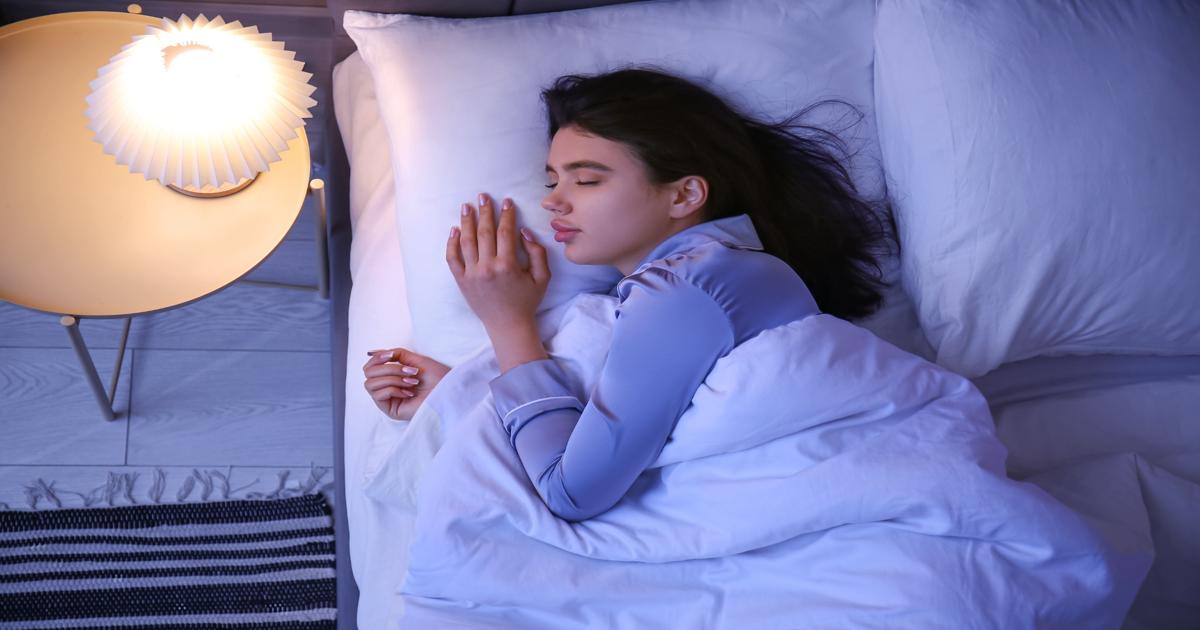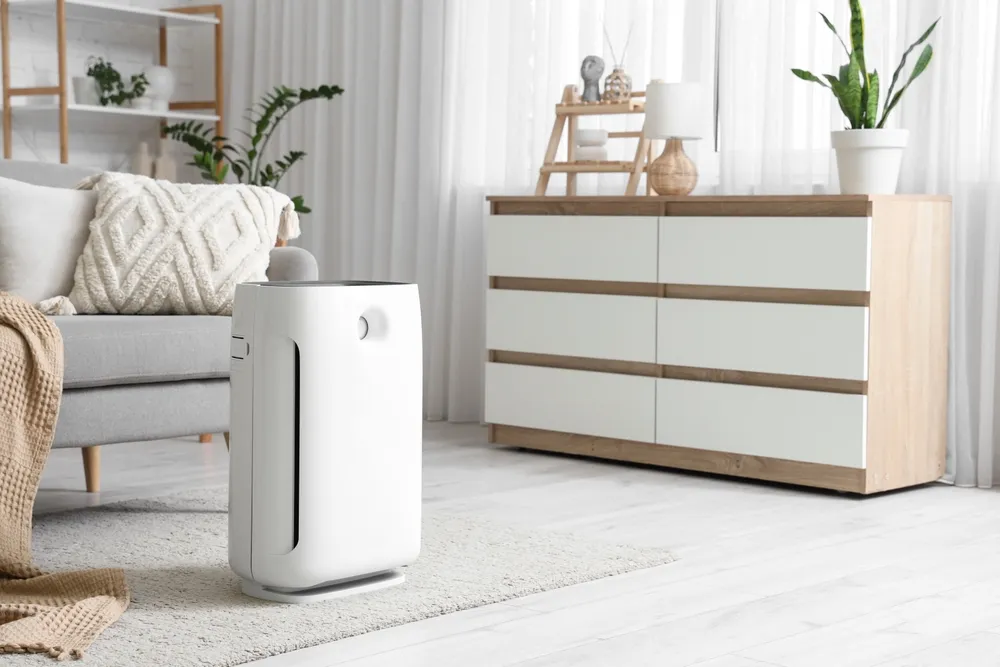
Struggling to drift off at night? Learning how to make yourself fall asleep fast can be a game-changer for your sleep routine. Whether you’re dealing with a restless mind or just can’t seem to relax, there are simple strategies to help you fall asleep quickly.
In this article, we’ll explore practical tips and techniques that will help you quiet your mind and settle into a restful night’s sleep.
Understanding Sleep and Its Importance
Before diving into specific techniques, it’s crucial to understand why sleep is so vital for our overall health and well-being.
The Science of Sleep
Sleep is a complex biological process that plays a critical role in our physical and mental health. During sleep, our bodies repair tissues, consolidate memories, and regulate hormones. The sleep cycle consists of several stages, including light sleep, deep sleep, and REM (Rapid Eye Movement) sleep, each serving unique functions.
The Consequences of Poor Sleep
Chronic sleep deprivation can lead to a host of health issues, including:
- Weakened immune system
- Increased risk of heart disease and stroke
- Weight gain and obesity
- Impaired cognitive function and memory
- Mood disorders such as anxiety and depression
- Decreased productivity and performance
Now that we understand the importance of sleep, let’s explore various methods to help you fall asleep quickly and improve your overall sleep quality.
Discover How to Make Yourself Fall Asleep Fast
Struggling to nod off quickly? In this section, we’ll explore different methods that show you how to make yourself fall asleep fast. With a bit of practice, these techniques can improve your sleep routine.
How to Fall Asleep in Just 10 Seconds
Falling asleep this fast might seem like a trick, but with practice, it’s possible! Enter the military method. This technique, made popular by Lloyd Bud Winter’s book “Relax and Win: Championship Performance”, was originally developed during World War II to help airmen fall asleep under extreme conditions.
It may take a few weeks of practice, but when perfected, it’s said to have a 96% success rate—even in stressful environments. The whole process takes around 120 seconds, but the final 10 seconds are key for drifting off.
Here’s how it works:
- Start by relaxing your entire face, even the muscles inside your mouth.
- Let your shoulders drop and release the tension in your arms.
- Exhale slowly and relax your chest.
- Allow your legs, from your thighs down to your calves, to loosen up.
- Now, clear your mind for 10 seconds. Picture a peaceful scene or repeat the phrase “don’t think” to yourself.
If you stick with it, you could be fast asleep within 10 seconds! However, if it doesn’t work right away, focus on building the basics of relaxation and breathing. It might take a bit of practice to get it just right.
How to Fall Asleep in 60 Seconds
Try focusing on your breath and muscle relaxation. These techniques are designed to calm your mind and body, helping you drift off faster. While they might take a bit of practice, with time, you’ll be able to relax in under 60 seconds.
The 4-7-8 Breathing Method
It’s a simple way to relax your mind by controlling your breath. If you have asthma or any other respiratory issues, check with your doctor first to make sure it’s safe for you.
Here’s how to do it:
- Place the tip of your tongue on the roof of your mouth, just behind your front teeth. Keep it there the whole time.
- Exhale through your mouth with a soft whooshing sound.
- Close your mouth and inhale quietly through your nose for a count of 4.
- Hold your breath for 7 seconds.
- Slowly exhale through your mouth for 8 seconds, making that whooshing sound again.
Do this for four rounds, but if you start feeling drowsy earlier, let yourself fall asleep.
Progressive Muscle Relaxation (PMR)
Progressive muscle relaxation is all about tensing and then relaxing each muscle group to release any built-up tension. By doing this, you can help your body relax fully and drift off to sleep.
Here’s how to get started:
- Start by raising your eyebrows as high as you can for 5 seconds, then relax.
- Smile as wide as possible to create tension in your cheeks, hold for 5 seconds, then relax.
- Squint your eyes tight, hold for 5 seconds, and relax again.
- Continue down your body, tensing and relaxing each muscle group from your neck and arms down to your legs and feet.
Let your body sink into the bed as you focus on the calming sensations, and if sleep comes before you finish, don’t worry—just enjoy the rest!
How to Fall Asleep in 120 Seconds
Still can’t fall asleep? Don’t worry, there are a few more tricks to try. These methods work by distracting your mind and calming your body, helping you nod off in just two minutes.
Tell Yourself to Stay Awake
Sometimes, the harder we try to sleep, the more difficult it becomes. A technique called paradoxical intention (PI) encourages you to do the opposite – stay awake on purpose. This approach may ease the stress of trying to fall asleep, making it easier to drift off naturally.
By removing the pressure, you may find yourself asleep before you know it.
Visualise a Peaceful Place
Instead of counting sheep, try imagining a calm and soothing scene. Picture a gentle waterfall, the sound of flowing water, or the smell of fresh rain. Let this image fill your mind, pushing out any stressful thoughts or worries that might be keeping you awake.
Try Acupressure for Better Sleep
Acupressure can help your body relax and may make it easier to fall asleep. Focus on these three pressure points to get the best results:
- Spirit Gate: Locate the small dip below your pinky on your wrist. Gently press or massage the spot for 2-3 minutes in a circular motion.
- Inner Frontier Gate: Place three fingers below your wrist crease. Using your thumb, press between the tendons in the middle of your wrist and massage until your muscles feel looser.
- Wind Pool: Place your thumbs at the base of your skull, where your neck meets your head. Apply firm pressure in circular motions to relax your neck and head.
These techniques may take a bit of practice, but over time, they can help you fall asleep more easily.
Creating the Optimal Sleep Environment
Your sleep environment plays a crucial role in how quickly you fall asleep and the quality of your rest. Consider the following factors:
Temperature Control
The ideal bedroom temperature for sleep is between 15.6°C and 19.4°C (60°F to 67°F). A cool room helps lower your core body temperature, signalling to your body that it’s time to sleep.
Light Management
Exposure to light suppresses the production of melatonin, the hormone that regulates sleep. To create an ideal sleep environment:
- Use blackout curtains or an eye mask to block out external light.
- Avoid blue light from electronic devices at least an hour before bedtime.
- Consider using a red or amber night light if you need illumination during the night.
Noise Reduction
A quiet environment is essential for good sleep. If you live in a noisy area:
- Use a white noise machine or app to mask disruptive sounds.
- Invest in soundproofing materials for your bedroom.
- Try earplugs or noise-cancelling headphones designed for sleep.
Comfortable Bedding
Invest in a supportive mattress, pillows, and breathable bedding to ensure maximum comfort throughout the night.
Sleep-Enhancing Products for Faster Slumber
While lifestyle changes and relaxation techniques are crucial for improving sleep, certain products can also aid in your quest for faster, better sleep. Here are some innovative items that can complement your sleep routine:
- White Noise Machines: These devices create soothing background sounds to mask disruptive noises, helping you fall asleep more easily.
- Sleep-Tracking Wearables: Provide insights into your sleep patterns, helping you identify areas for improvement in your sleep routine.
- Light Therapy Devices: Help regulate your circadian rhythm by simulating natural light patterns, particularly useful for those dealing with jet lag or shift work.
- Massage Chairs: Massage chairs offer muscle relaxation and stress reduction, helping you unwind before bedtime.
- Weighted Blankets: The gentle pressure from these blankets can promote relaxation and reduce anxiety, potentially helping you fall asleep faster.
- Aromatherapy Diffusers: Disperse calming scents like lavender or chamomile throughout your bedroom, creating a sleep-friendly environment.
- Humidifiers: Humidifiers maintain optimal humidity levels in your bedroom, preventing dry air that can cause discomfort and disrupt sleep.
Remember, while these products can be helpful, they work best when used in conjunction with good sleep hygiene practices and relaxation techniques.
Lifestyle Changes for Better Sleep
To enhance your sleep, start by establishing a consistent sleep schedule. Also, create a relaxing bedtime routine and watch your diet to improve sleep quality.
Establish a Consistent Sleep Schedule
Go to bed and wake up at the same time every day, even on weekends. This helps regulate your body’s internal clock and can improve the quality of your sleep.
Create a Relaxing Bedtime Routine
Develop a calming pre-sleep routine to signal to your body that it’s time to wind down. This might include:
- Taking a warm bath
- Reading a book (avoid e-readers with blue light)
- Practising gentle yoga or stretching
- Listening to soothing music or a sleep podcast
Watch Your Diet
What you eat and drink can significantly impact your sleep:
- Avoid caffeine after 2 pm, as its effects can last for several hours.
- Limit alcohol consumption, especially close to bedtime.
- Avoid large meals late in the evening, but don’t go to bed hungry.
- Consider sleep-promoting foods like cherries, kiwis, or warm milk.
Exercise Regularly
Regular physical activity can improve sleep quality, but timing is important:
- Aim for at least 30 minutes of moderate exercise most days.
- Finish vigorous workouts at least 3 hours before bedtime.
- Consider gentle exercises like yoga or tai chi in the evening.
Frequently Asked Questions About Falling Asleep
Why can’t I sleep at night?
Struggling to sleep can happen for many reasons, like stress, anxiety, or even a restless environment. You might also be having trouble if your room is too noisy, bright, or your bed isn’t cosy. Other common culprits include too much caffeine, lack of exercise, and too much screen time before bed. Certain medications can also affect your sleep.
Why can’t I just fall asleep?
Being tired but unable to fall asleep can feel frustrating. It’s often linked to disruptions in your body’s sleep cycle, daytime naps, stress, or anxiety. To understand how to fall asleep fast, consider factors like too much screen time, late-night eating, or caffeine, which can also make it harder to settle down for the night.
Your Path to Faster, Better Sleep
Learning how to make yourself fall asleep fast is a journey of self-discovery and practice. By implementing the techniques discussed in this article, from the military method to creating an optimal sleep environment, you can significantly improve your sleep quality.
Remember, consistency is key. Experiment with different methods and find what works best for you. With patience and persistence, you’ll be on your way to faster, more restful sleep and improved overall well-being.
Transform Your Sleep Experience with OSIM
Ready to take your sleep to the next level? Visit OSIM to explore how OSIM’s cutting-edge technology and uLove 3 range can complement your newfound sleep techniques and show you how to make yourself fall asleep fast, creating the ultimate relaxation experience for faster, deeper sleep.



